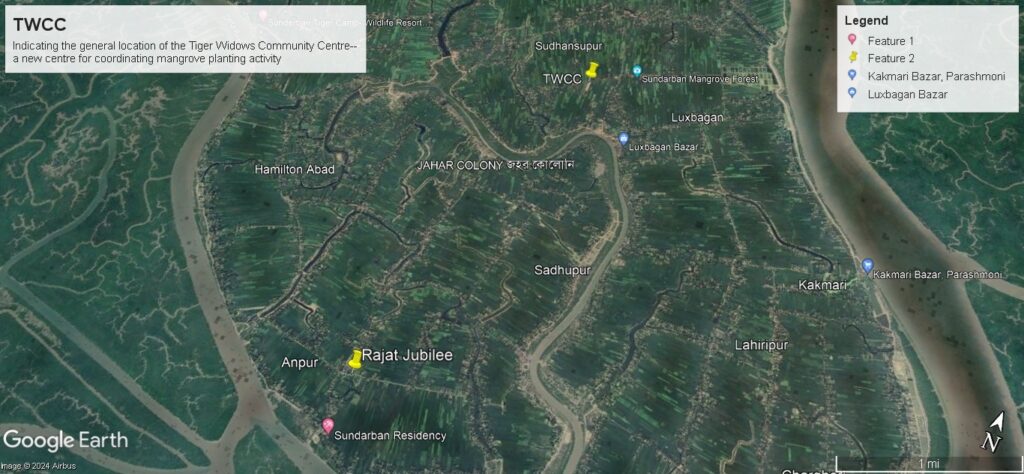Our work with mangroves—A brief history (Part 2)
Society for Direct Initiative for
Social and Health Action (DISHA)
Contents
- Journey from Plantation to Nurturing, lessons learnt
- The Sundari
- Arjun leaves us
Journey from Plantation to Nurturing, lessons learnt
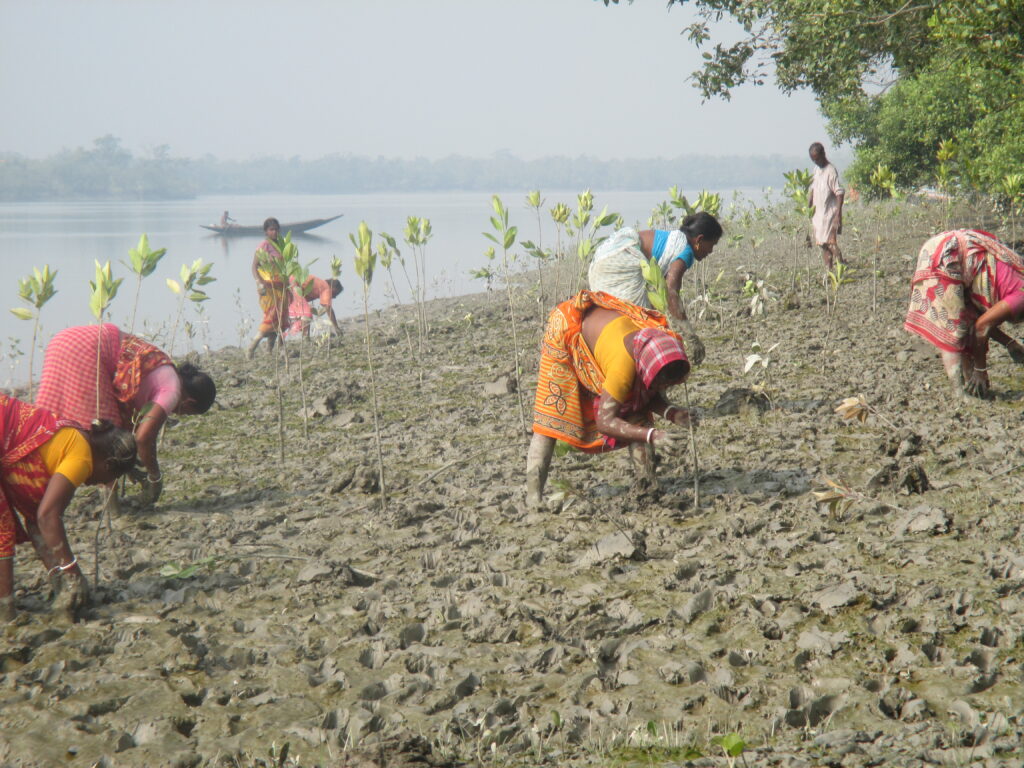

Most of the seedlings produced in the nurseries were being directly planted by the tiger widows in the long tracts of the river banks. It was soon realized that plantation was not enough. Nurturing the plants was more important than planting. The planters thus spend a lot of time in rearing, nurturing and protecting the plants. They guard the juvenile plants from goats and fuel wood collectors. Large areas were fenced with old and used nets. Some plants had to be specially nurtured with soil management, support sticks etc. Effort was taken to provide the mangroves with space and a supportive environment for natural regeneration. At present this portion of mangrove forest is protecting the banks of Lahiripur.
Supported by DISHA, the SRDS initiated a mangrove school where children of the local communities joined weekly classes. They were taught to recognise different varieties of mangrove plants and their usefulness in protecting river banks, fighting diseases, providing food and fuel.

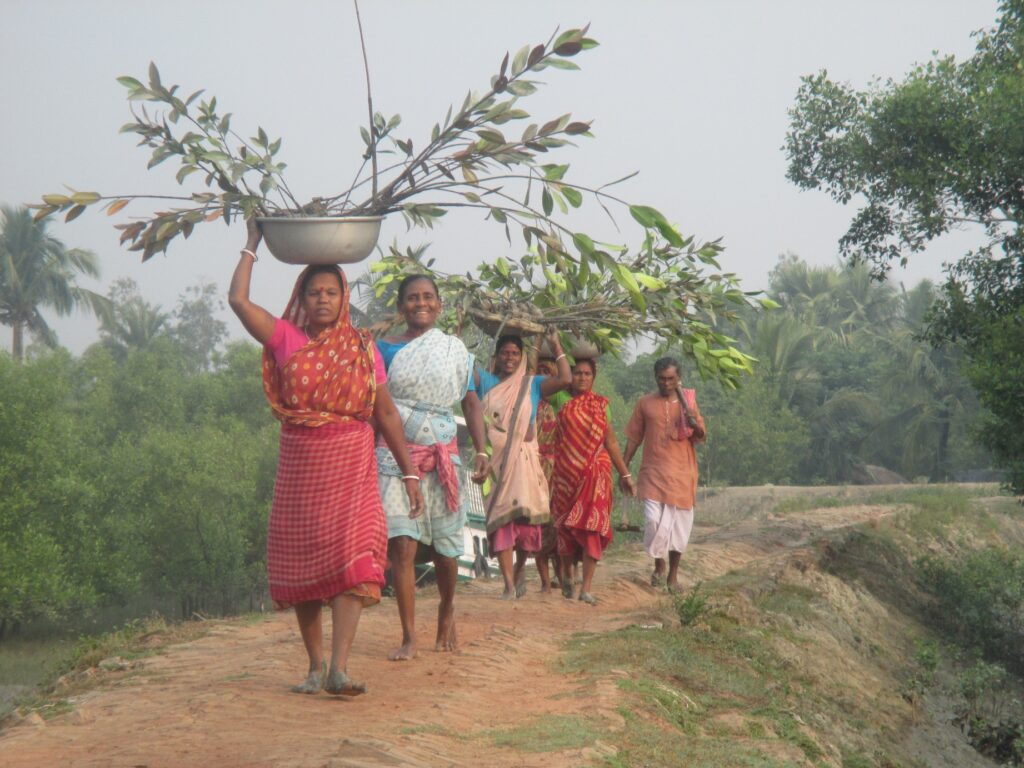
The Sundari
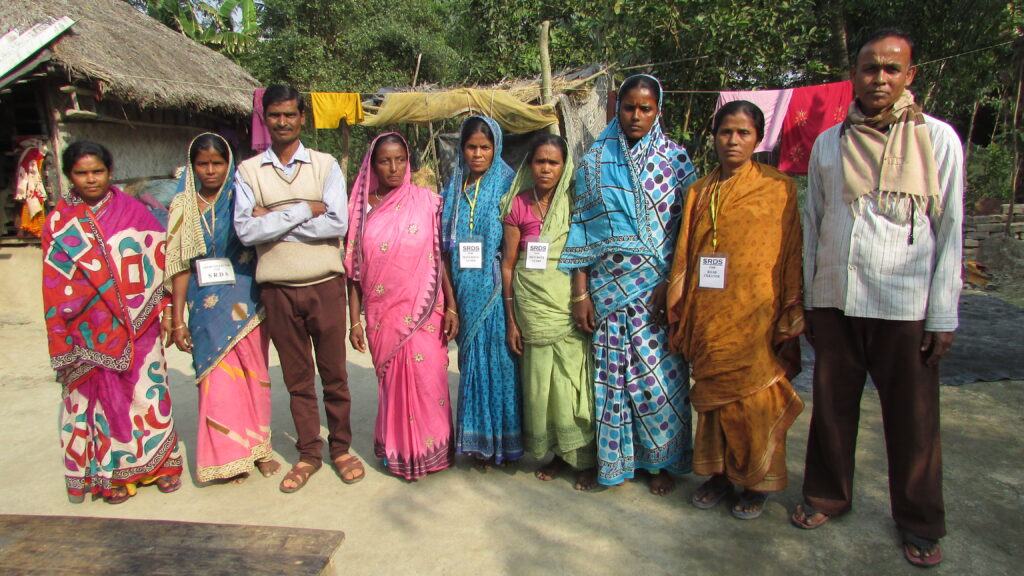
In 2018, the plantation team further planned to develop a specific variety of mangrove—the eponymous Sundari,[1]from which the Sundarban gets its name. Biodiversity in the mangrove forest is generally endangered. However, in the list of endangered species, the two renowned are the Bengal Tiger and the Sundari tree. The charismatic Bengal Tiger has received international attention and funds have poured in to save the tigers through various projects. But, in comparison, the Sundari, although it has received plenty of mention in the concerned literature, has been unable to catch the imagination of conservationists. Thus, there has been no widespread or sustained effort to protect the Sundari, which is almost extinct in the West Bengal Sundarban possibly due to increasing salinity (for, the Sundari thrives better in low saline conditions). The plantation team started collecting Sundari seeds and grew saplings by germinating the seeds. This time they planted all the juvenile saplings on the village side of the river banks so that the tidal water does not reach them frequently. Protective gabions (girded with bamboo poles and nets) were set up for each sapling and plant. Fresh non-saline water was carried by the tiger widows from the village for wetting the plants every day.
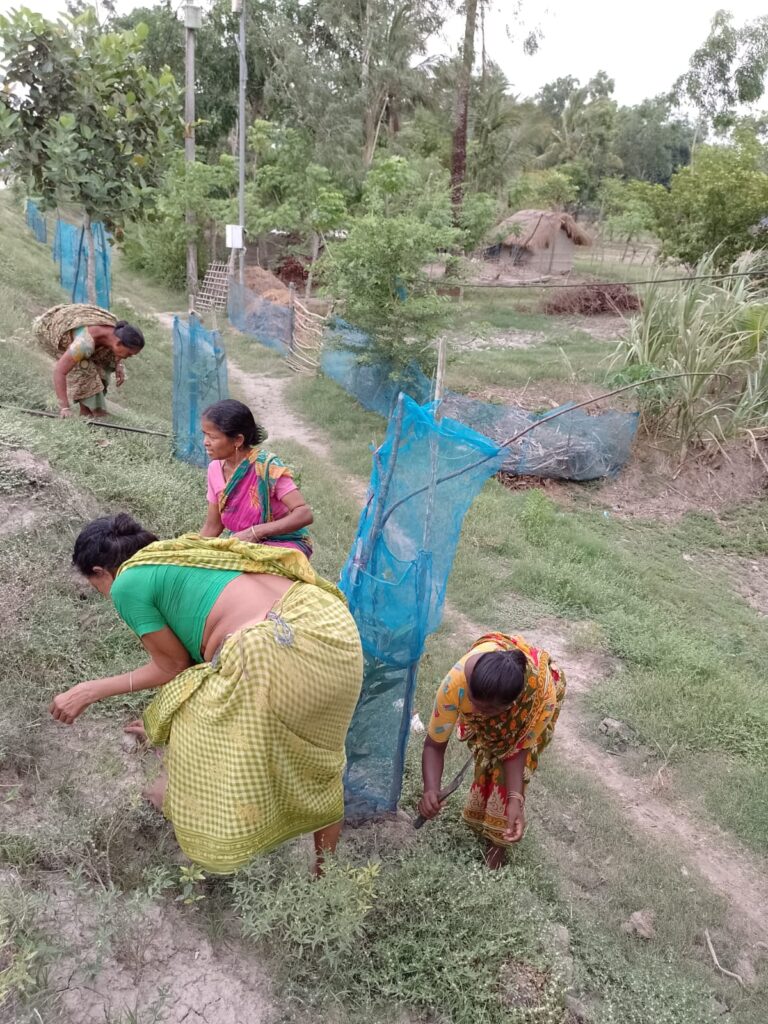
Arjun leaves us
Arjun went to Pirkhali forest for a 5-day fishing trip to catch crabs in the last week of July 2019. On 29 July 2019, during mid-day, while he was engaged in arranging equipment for fishing, a tiger suddenly attacked him and took him away. In spite of repeated search, his body could not be found.
It was a huge loss. A huge loss for his family, a huge loss for the fishing community, a huge loss for environmental activism, a huge loss for the tiger widows and a huge loss for DISHA.
Remembering Arjun Mondal through his Mangrove Initiative
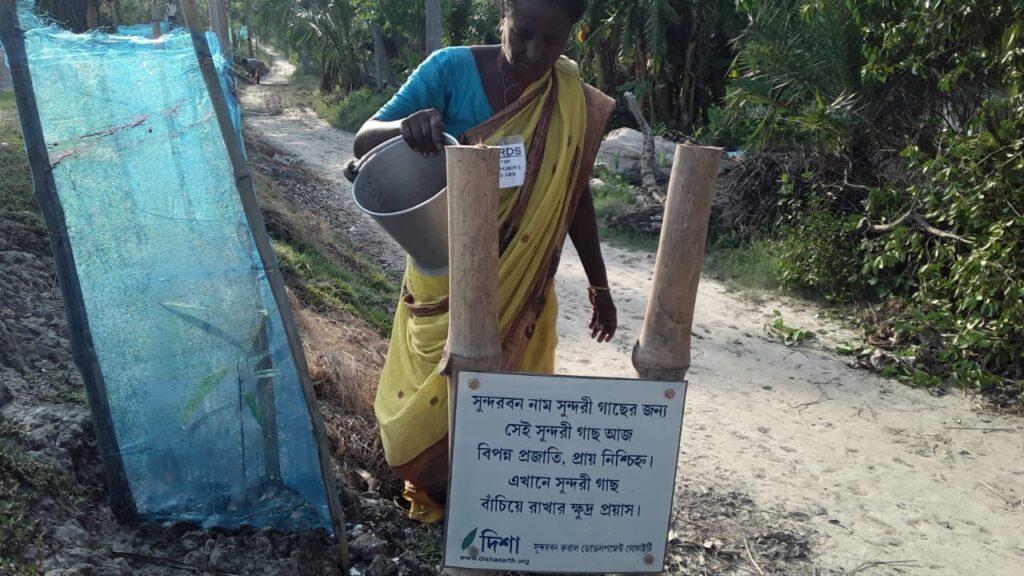
The mangrove group vouched that the members would continue to protect and raise the Sundari plants. By this time more than 1000 saplings were planted. This has become a visiting spot for the tourists who visit Lahiripur. The cyclones in two successive years – Amphan in 2020 and YAAS in 2021 threatened the existence of the mangroves as Sundarban was badly affected by these cyclones. The tiger widows worked hard to protect and revitalise the mangroves. Moreover, some work of repairing and strengthening the embankments was taken up by the local government in 2022. This was accompanied by massive soil and cement construction work causing considerable damage to the Sundari plants. Nevertheless, the tiger widows managed to protect the plants. Now these have grown up considerably.
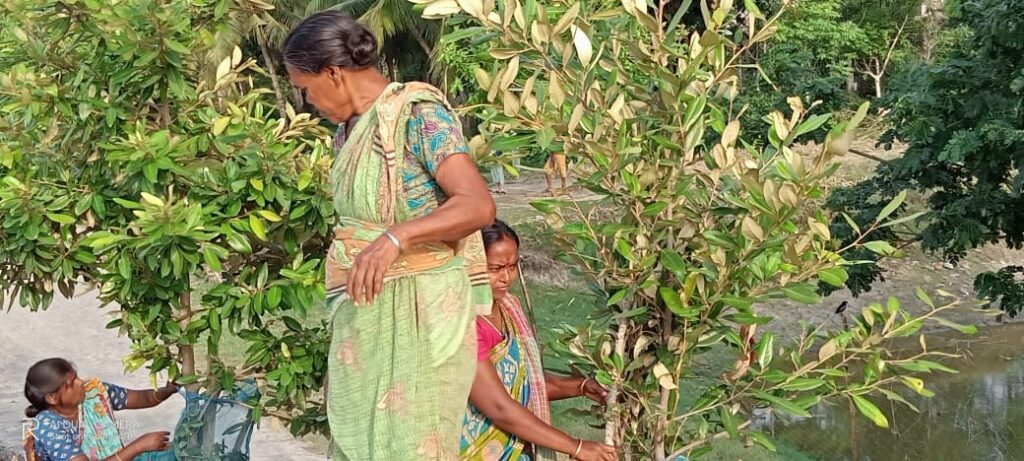
The work continues
The story has not ended and the work continues. Supported by DISHA, the Tiger Widows now have an office (the TWCC: Tiger Widows Community Centre) in the village of Sudhangshupur situated in the eastern part of Satjelia Island and under the Satjelia Gram Panchayat in Gosaba Block. This is now also a centre for coordinating mangrove planting activity.
